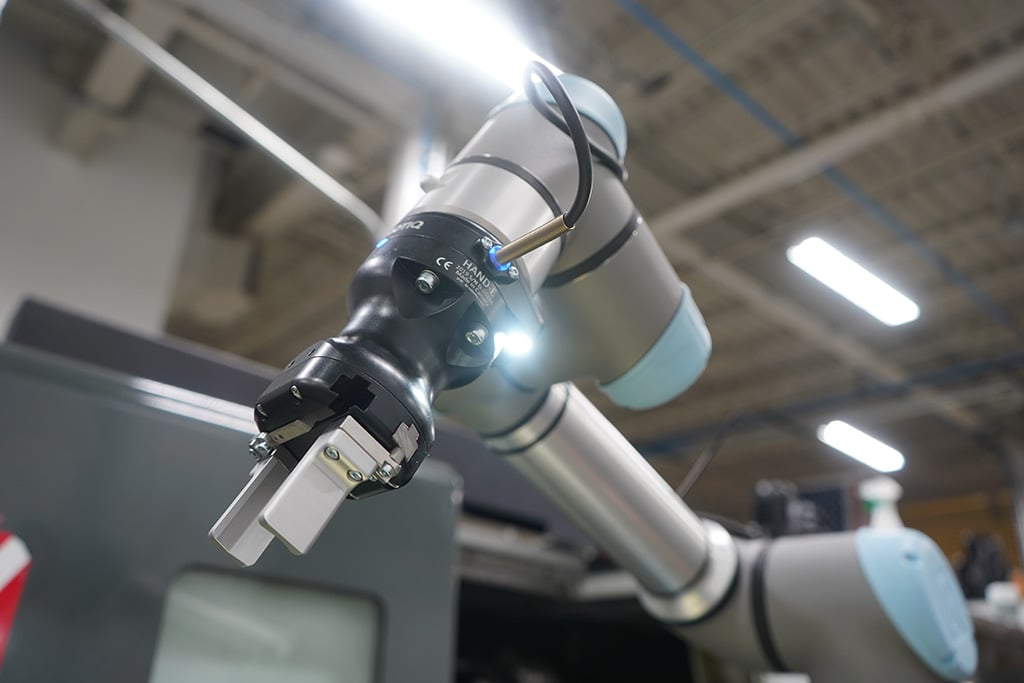How Robots Helped With the Pandemic Response

It's been roughly a year since the Covid-19 pandemic shook industries and set the world in disarray.
Businesses across the world have been hit in varying degrees by the situation. Some found that their markets are thriving thanks to the changes that the pandemic has brought about. Others have been forced to reinvent themselves or risk collapsing under the weight of the situation.
Robotics has been a driving force behind many of the changes that companies have made this past year. With social distancing and lockdowns enforced through much of the year, we have all had to find new ways to continue to thrive. Automation has provided a tool for this change.
According to a report by the World Economic Forum, the pandemic has sped up the use of automation across 15 industries and 26 economies. The most competitive businesses, the report said, chose to upskill and reskill employees in response to the situation.
Change has been a hallmark of the pandemic use of robotics.
Plenty of businesses changed dramatically over the year with help from robotic automation, both so they could help the global situation and so they could survive.

The robots that leapt to action when the pandemic hit
When we talk about robotic automation, many believe that this means replacing people with robots. As the pandemic progressed, people were concerned about work disappearing and perhaps worried that robots would be brought in to take over their jobs.
But, rather than replacing jobs, robots have instead provided a means by which many companies have been able to continue operating, and thus keep jobs.
Over the year, we saw various companies taking the lead on new initiatives and using robots to help the pandemic response.
For example:
- We saw robots being used to help labs to continue to perform routine experiments, leaving the lab scientists time to investigate the Covid-19 virus.
- We saw manufacturers switch their production to face masks for people to wear to stop the spread of the virus.
- We even saw mobile robots being used in public parks in Singapore to enforce social distancing rules.
Such initiatives have shown that robots are not just a technology for times of prosperity. They are also important as vehicles of change when times are tough.
Here at Robotiq, we have been involved, in a small way, in some projects that also helped to push forward the pandemic response.
How a Canadian cosmetic company used robots to make hand gel
Hand sanitizing gel is one product that has experienced a lot of demand over the past year. Soon after the pandemic hit, stocks of hand gel plummeted as millions of people suddenly started using it to help stop the spread of the virus.
For a while, it was looking like hand gel supplies were going to run out. However, manufacturing companies around the world jumped into action and started making hand gel, even if it wasn't one of their products previously.
One such company was The Color Group.
Who is The Color Group?
The Color Group is a division of Canadian Custom Packaging. It specializes in the manufacturing of colors for the cosmetics industry (face powders, liquids, eye shadow, etc).
How they responded to the pandemic
Director of Operations Alexandre Nault explained in a LinkedIn video:
"From the first moments of the crisis, we worked with local companies and government to ensure that we were on the list of essential businesses. In a few days, we set up a contingency plan and transformed the plant to manufacture disinfectant gel. The objective was clear: to help hospitals and care centers here in the region of Quebec."
Their robotic setup
The team's robotic setup included an Omron/TM collaborative robot and a Robotiq Hand-E Adaptive Gripper with custom fingertips. The robot collected empty bottles from a conveyor, filled them with hand gel using an automatic filling machine, and deposited the full bottles next to an operator who screwed on the lids.
How the Robotiq Machine Tending Kit helped make ventilators
But, it's not just Canada where companies have been using robots to help with the pandemic effort.
And it's not just hand gel that manufacturers have been making.
A more complex technology that has seen a sharp rise in demand over this past year is ventilator machines. These have been vital to help recuperate those people who were hit hardest after contracting Covid-19.
One company that helped in this regard was Gardner Denver.
Who is Gardner Denver?
Gardner Denver is a global company that provides vacuum pumps and blowers to the healthcare industry. Their team in Louisiana responded to the pandemic by focusing their efforts on components for ventilators.
How they responded to the pandemic
When the growing demand for ventilators became clear, Gardner Denver saw that there was going to be an increased need for channel blowers, a component that moves air inside medical ventilators. They identified one of their CNC machines that was involved in mass producing oxygen compressors and other ventilator equipment.
Their robotic setup
The team used a Universal Robots UR10 collaborative robot to tend the vital CNC machine. To do this quickly and easily, they chose the Robotiq CNC Machine Tending Kit, which helped them to get the robot up and running as soon as possible.
How did you use robots to help with the pandemic response
The Color Group and Gadner Denver are just two of the companies that have used robots in this past year to help the pandemic response.
How have you used robots to help your operations during this past year?
Tell us in the comments below or join the discussion on LinkedIn, Twitter, Facebook, or the DoF professional robotics community.






Leave a comment